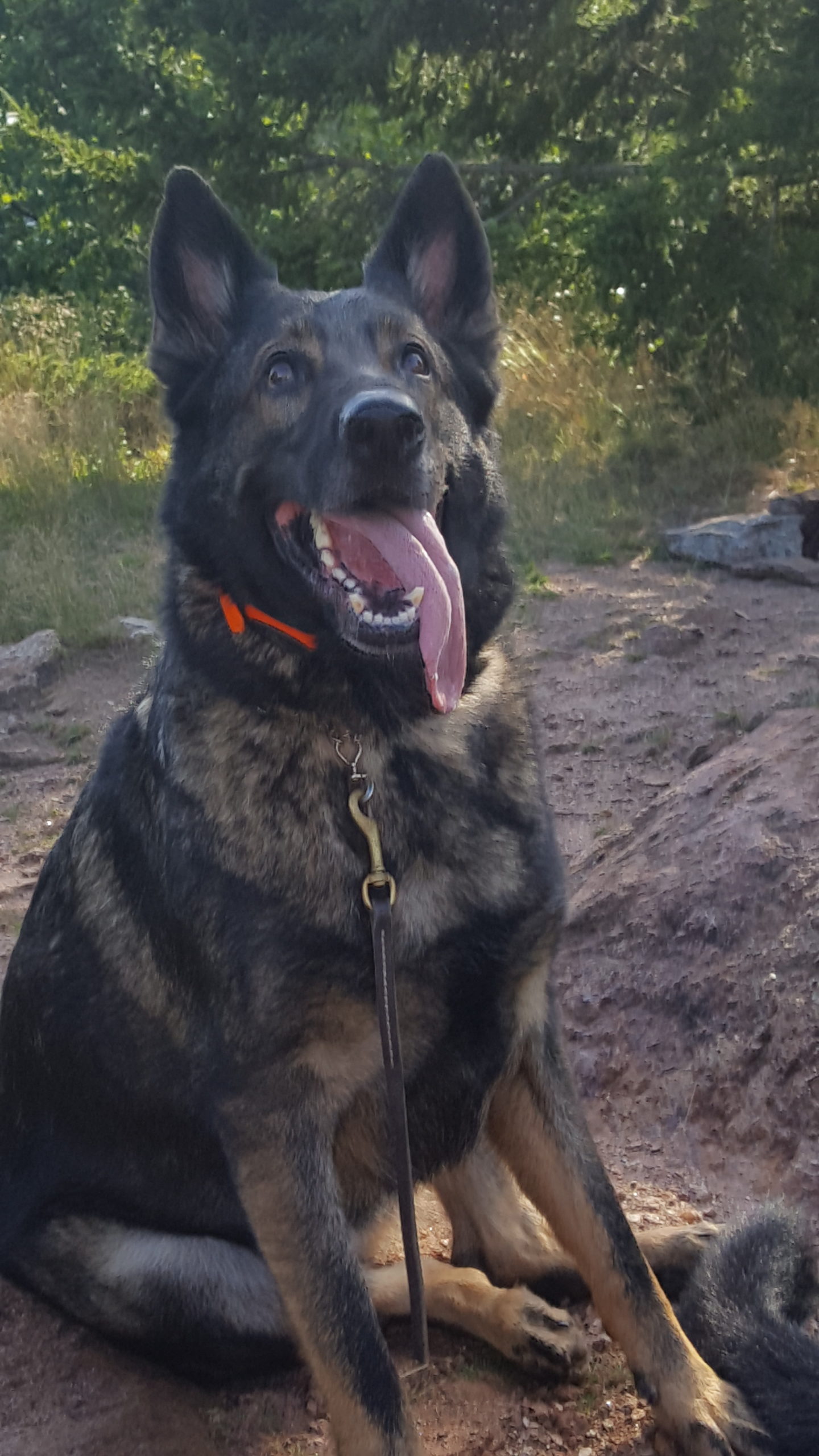It’s an interesting experience as a therapist to face a situation in which you need the strategies and skills you usually help other people apply in their own lives. Our weeks are spent supporting other people through pain, anxiety, depression, sadness, transitions, and so it feels almost surprising when we are suddenly in more of a “patient perspective”. At these times, we experience the polarized effect of our brain warring between what we know to do to manage the situation, and what we are feeling in the situation.
As I write, this is the seat I am in. My German Shepherd, Kona, died unexpectedly yesterday. She was only six years old. We started the day headed to her vet for an annual check-up, with me certain I was being paranoid about some random symptoms and behaviors I’d seen over the past week. Within 10 minutes, the vet was calling to the emergency vet clinic 30 minutes away, telling me to take Kona there immediately due to a mass on her spleen. Once at the clinic, test results revealed her platelets were significantly low and her white blood cell count was significantly high. Further testing confirmed the worst: Kona had stage 5 lymphoma and it had compromised most of her body. With chemotherapy, her life could be extended to another 6-12 months, but the cancer would come back and she would be sick from the chemo during those months. Within four hours of a routine vet appointment, Kona was gone.
It’s been just over 24 hours since then. There are times when my logic and training are fully engaged, and I employ strategies I usually teach my patients. But then are moments when I actively refuse the strategies because for whatever reason, I just want to be sad. I want to grieve. I want to deal with the pain of losing my first dog, my companion, yoga partner, protector, co-therapist, and child, way too soon. Why? It’s an interesting question, particularly after last month’s blog post about a different view on death. I think it simply goes back to the idea that we all manage loss and transitions at an individualized level. My husband, for example, shifted within minutes to remembering good stories about Kona. He asked each family member to pick one story and share it. His was from one of the first days Kona was home. After setting up the puppy “playpen”, Kona scaled it, up and over, then looked at us with what I swear was a look saying, “Did you really expect me to stay in there?” Mine was the time our house was infested with black ants. I was home alone, going from spot to spot, spraying them with bleach. At one point, I felt like some were crawling on me, and I let out a very Hollywood-esque scream. Kona, who was outside, came charging up the front steps, and started jumping and barking at the glass on the front door. I let her in, certain she wouldn’t stop and afraid she’d hurt herself. She went from the spot I’d been in to me, nuzzling my hand, and back again, trying to figure out what was hurting me and how to stop it. While my husband’s approach is an effective strategy, my happy memories of Kona still make me cry. I desperately want to be done with the grieving. I want to “get over this” now. I know all the strategies so why, after 24 hours (and, yes, I get the ridiculousness of that statement), do I still feel like I’ve run into a brick wall, over and over and over?
So we’re back to the individualized grief theory. My husband quickly moved to celebrating Kona’s life. Our younger daughter and I are vacillating between laughter and tears, and our older daughter is slowly moving from her initial, intense anger to the details of a different dog sometime in the future. While grief for a pet is individualized, the strategies to manage it are universally appropriate. Some things to consider:
- Create time to reflect on your experiences with your pet. Whether while meditating, or through journaling, or simply storytelling, as you focus on the positive, funny, heartwarming stories about your pet, your pain transforms, bit by bit, into gratitude;
- Schedule time to process. The world around you will keep going. I saw friends today on Facebook going for hikes, running errands, making plans, and even outside my own window, my husband was building our new deck. Friends had invited us over for dinner, and the disconnect I felt made the grief I was trying to ignore and just “get over” worse. Part of my world had ended, and it didn’t feel right that the rest of the world was functioning like it was a normal day. This was, in part, due to the fact that I didn’t allow time for me to just feel the emotions. Not only didn’t I want to feel them, I also felt like I should be able to manage them better due to my training or to be strong for our kids. But repressing the emotions only results in those emotions getting stronger over time, so allowing them to come out, allowing time to experience them, allows you to acknowledge them. And then when you acknowledge them…
- Identify the thoughts triggering the emotions, and replace them. When I’ve thought of Kona today, the sadness and disbelief usually take over my body, from the bottom of my stomach, up through my chest and into my throat. The thoughts usually go from how much I’ll miss her, to how unfair that we were only together 6 years, to how yesterday started like any normal day and then became unimaginable. These are the avalanche thoughts – the ones that will leave a person reeling and sinking into the sadness. Emotions come from thoughts so to change the emotions, we replace our thoughts. I continue to call up funny and happy memories of Kona. I think about how lucky I am that she was my first dog, and even with all the pain she may have been in over the past few weeks, she was never aggressive or irritable with anyone in our family, including our overactive three-year-old Shepherd. She was amazing, and we were so fortunate to have her;
- Take time. This one is related to the second strategy. We don’t get time off to grieve a pet. Finding ways to calm ourselves, particularly over the next weeks when we continue to function in our daily lives, will help us manage those moments when our grief interrupts our day. Exercise, deep breathing, walks, meditation, yoga, journaling, listening to music, art are all options to relax, reconnect with our breath and reduce our anxiety;
- Maintain routines for yourself, your family, and your other pets. Routines help us establish normalcy, move forward, feel grounded. During this time, they can offer relief for everyone touched by the pet’s absence. As part of the routine, maintain your self-care. This includes eating, drinking water, getting exercise, and sleeping when needed. These essential activities came be disrupted by grief, or the guilt that can come with a pet’s death. I haven’t been hungry today, but I ate three meals. Since I only got 4 hours of sleep last night, I allowed myself to take a nap this afternoon. Grieving is taxing, so help yourself psychologically and physically;
- Memorialize the life with your pet. This can mean different things to different people. My younger daughter asked help in finding a photo of Kona for her room. My older daughter is planning a tattoo of Kona’s name when she is old enough. My husband will do so by sharing memories of her. Me? I needed to move Kona’s bed away from my side of the bed where she slept every night, but once I did that, the space looked very empty. Years ago, my husband found a 12 pound, heart shaped rock on a hike, put it in his backpack, and gave it to me as an anniversary present. I moved that rock today from the spot it has occupied for years, to the corner where Kona’s bed was. Instead of an empty space, now I see a reminder of all the love she brought into my life.
I’ve never lost a pet so this is a new experience for me, and I needed to figure out how to do it, how to make the time to process, how to remind myself of the ways to manage the thoughts and emotions. Writing this was part of my process, so thank you for being part of the process.
And finally, to Kona. I miss you. You will always be part of my heart and my memories. And I am so very thankful we had each other. I love you, Bones.
Just a little something for your insight. – Dr. Robin

